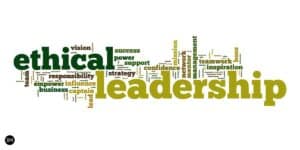Lean leadership is not just about implementing a methodology; it’s about fostering a culture of continuous improvement that drives efficiency and success. By applying Lean principles, leaders can minimize waste, optimize processes, and cultivate a team environment where everyone is engaged and focused on delivering value. This article explores key Lean principles, shares real-world examples, and provides a step-by-step guide on how to apply these practices effectively within your organization.
1. Understanding Lean Leadership
Lean leadership is a management approach derived from Lean manufacturing principles that originated in the Toyota Production System. It focuses on reducing waste, improving process efficiency, and adding value for the customer. Unlike traditional leadership styles that may emphasize hierarchy and control, Lean leadership encourages a culture of collaboration, problem-solving, and continuous improvement.
Lean leaders are facilitators, coaches, and mentors who empower their teams to identify and solve problems. They guide rather than dictate, ensuring that every team member is aligned with the organization’s goals and equipped with the tools they need to succeed.
2. Key Lean Principles
2.1. Eliminate Waste
The core of Lean is to eliminate waste (known as “Muda” in Japanese). Waste can take many forms, including overproduction, waiting time, excessive movement, unnecessary processing, and defects. By identifying and removing waste, Lean leaders streamline operations and improve productivity.
Example: A manufacturing company might reduce overproduction by implementing a just-in-time (JIT) inventory system, minimizing storage costs and ensuring materials are available only when needed.
2.2. Continuous Improvement (Kaizen)
Kaizen refers to the practice of continuously seeking ways to improve processes. This involves small, incremental changes that lead to significant improvements over time. Lean leaders encourage team members to share their ideas for improving efficiency and quality.
Example: Toyota’s commitment to Kaizen has allowed it to refine its production processes continually, enabling the company to adapt quickly to changes in demand and market conditions.
2.3. Respect for People
Respect for people is fundamental to Lean leadership. This means treating employees as valuable assets, involving them in decision-making, and empowering them to take ownership of their work. Lean leaders focus on developing their teams’ skills and capabilities.
2.4. Value Stream Mapping
Value Stream Mapping (VSM) is a visual tool used to analyze and improve the flow of materials and information through a process. It helps identify inefficiencies and areas where waste can be reduced, enabling Lean leaders to streamline operations and improve overall efficiency.
Example: A software development team may use VSM to identify bottlenecks in their workflow, such as long review periods or delays in testing, and find solutions to optimize the process.
2.5. Standardization
Standardization involves establishing consistent methods and procedures for performing tasks. This ensures that processes are repeatable and predictable, leading to higher quality and efficiency. Standardized processes also make it easier to identify and address issues when they arise.
Example: In a call center, creating a standard operating procedure (SOP) for handling customer inquiries ensures that all agents follow the same steps, resulting in faster response times and improved customer satisfaction.
3. Benefits of Lean Leadership
Implementing Lean principles can bring numerous benefits to organizations, including:
- Improved Efficiency: Streamlined processes lead to faster production and reduced operational costs.
- Higher Quality: Continuous improvement ensures products and services meet high standards.
- Increased Employee Engagement: Empowering employees to participate in problem-solving fosters a sense of ownership and motivation.
- Greater Customer Satisfaction: Efficient processes and high-quality products lead to better customer experiences.
4. How to Apply Lean Principles: Step-by-Step Guide
4.1. Identifying Value
The first step is to define what constitutes “value” from the customer’s perspective. This involves understanding customer needs and identifying which aspects of your products or services are most important to them.
4.2. Mapping the Value Stream
Create a Value Stream Map to visualize the steps required to deliver the product or service. This will help identify non-value-adding activities that can be eliminated.
4.3. Creating Flow
Ensure that the process flows smoothly without interruptions. This may involve reorganizing workstations, reducing handoffs, and eliminating bottlenecks.
4.4. Establishing Pull
In a Lean system, work is “pulled” through the process based on customer demand rather than being “pushed” based on forecasted production. This reduces waste and overproduction.
4.5. Pursuing Perfection
Lean leadership is an ongoing journey. Continuously seek ways to improve processes, reduce waste, and enhance value for the customer.
5. Case Studies: Companies Successfully Using Lean Leadership
5.1. Toyota
As the pioneer of Lean, Toyota’s production system remains one of the best examples of Lean leadership. Through principles like JIT and Kaizen, Toyota has maintained high efficiency and quality across its manufacturing plants worldwide.
Key Takeaway: Empowering employees to take part in problem-solving and continuous improvement leads to sustainable success.
5.2. Intel
Intel applied Lean principles to its manufacturing processes to reduce production cycle times by over 60%. By streamlining workflows and eliminating unnecessary steps, the company significantly improved efficiency.
Key Takeaway: Even in high-tech industries, Lean principles can drastically reduce waste and optimize processes.
5.3. Nike
Nike integrated Lean practices into its supply chain, focusing on waste reduction and sustainability. This has not only improved efficiency but also reduced the company’s environmental impact.
Key Takeaway: Lean leadership can drive both operational efficiency and corporate responsibility.
6. Challenges in Implementing Lean Leadership
- Resistance to Change: Employees may be hesitant to adopt new practices, especially if they have been accustomed to traditional methods.
- Initial Investment: Implementing Lean principles may require upfront investment in training and process redesign.
- Sustaining Momentum: Continuous improvement requires long-term commitment, which can be difficult to maintain without strong leadership.
7. Best Practices for Lean Leaders
- Lead by Example: Show your team that you are committed to Lean principles by practicing what you preach.
- Foster a Culture of Continuous Improvement: Encourage employees to share their ideas and participate in problem-solving.
- Provide Training and Resources: Equip your team with the knowledge and tools they need to implement Lean practices effectively.
- Focus on Metrics: Use data to track progress and identify areas for improvement.
8. External Resources and Further Reading
- Lean Enterprise Institute: Offers comprehensive resources, including articles, webinars, and training programs on Lean principles.
- The Toyota Way: A classic book by Jeffrey Liker that provides insights into the Toyota Production System.
- Lean Six Sigma Certification: For those interested in becoming certified, this organization offers a range of certification programs.
- Kaizen Institute: Provides training and consulting services to help organizations implement Kaizen and Lean practices.
Conclusion
Lean leadership is about more than just implementing a set of tools; it’s a mindset that requires commitment, collaboration, and continuous improvement. By understanding and applying key Lean principles, leaders can drive efficiency, enhance team performance, and create a culture that embraces change and innovation. Whether you are in manufacturing, technology, or services, the principles of Lean leadership can help you build a more agile, productive, and successful organization.
If you are ready to take your leadership to the next level, start by educating your team on Lean principles and seeking ways to eliminate waste in your processes. For more information, check out the resources mentioned above or consider getting certified in Lean Six Sigma.











